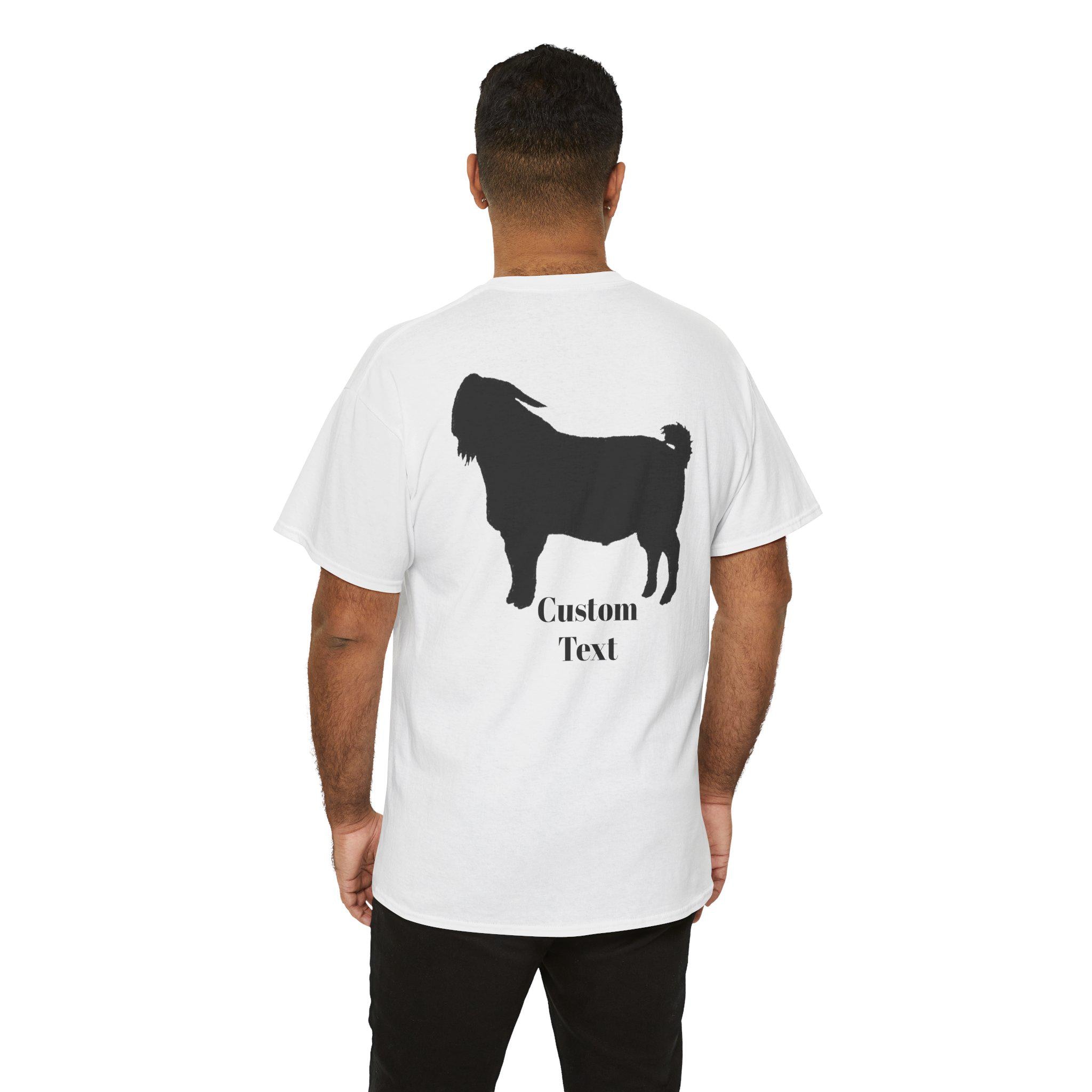Meat Goats as Companion Livestock
Studies show that the goat meat industry is the fastest growing livestock industry in the United States. The main reason is that the goat meat industry is not looking for someone who is willing to try an unknown meat for the novelty of it, as the buffalo and ostrich breeders have been. Meat goat producers are not raising an `exotic' product. Goat meat is already eaten by 70% of the population of the world, and it has been since the beginning of time. What we are breeding is a better, bigger, meatier animal. Goat meat is seeking market acceptance in the western culture, and is offering an alternative to some of the failing agricultural products in the United States, and the world.
The demand for `chevon', or `cabrito', or `goat meat' in the United States is so high that producers can't keep up. Because of this vacuum, much of the goat meat sold in the United States is imported from New Zealand or Australia. About 1.5 million pounds of goat meat is imported every week. And demand just keeps growing.
Much of the demand is generated by the changing ethnic demographics of the continent. About 63% of the red meat consumed worldwide is goat! Much of the goat meat demand in the United States comes from ethnic groups that include Middle Eastern, Asian, African, Latin American and Caribbean heritage. Most of these groups buy goat meat whenever they can find it, and they are willing to pay better prices for higher quality meat.
Chevon: What is so special about chevon (goat meat)? Many people have digestive problems that require a careful diet. The molecular structure of chevon is different than that of other meats. Therefore, chevon digests more easily. It is also a low fat, good tasting alternative to chicken or fish. Here is a table that shows the comparative nutrition of chevon:
| 3oz Roasted | Calories | Fat(g) | Sat. Fat(g) | Protein(g) | Iron(g) |
| Chevon | 122 | 2.58 | .79 | 23 | 3.2 |
| Chicken | 120 | 3.5 | 1.1 | 21 | 1.5 |
| Beef | 245 | 16.0 | 6.8 | 23 | 2.0 |
| Pork | 310 | 24.0 | 8.7 | 21 | 2.7 |
| Lamb | 235 | 16.0 | 7.3 | 22 | 1.4 |
Combining Goats with Other Livestock: Goats can be a good companion livestock with cattle or sheep if they are in conditions where they can browse. If given a choice, goats will eat brush and tall weeds, cattle eat tall grass, and sheep eat shorter grasses. Goats and sheep tend to graze the high ground, while cattle prefer to stay in the valleys. Grazing a combination of these different livestock can help you to manage risk, and promote plant diversity on our rangelands.
Researchers at the U.S. Sheep Experiment Station in Dubois, Idaho, found they could increase rangeland stocking rates by 60% when they grazed cattle and sheep together. They also found that plant species diversity increased. Although these studies do not include goats, you can see that the parallel would apply.
There are advantages, and disadvantages, to combining species on rangeland. For one thing, chevon prices are on the rise, while beef prices have dropped. Different species also have their young at different times of the year. This can insure that you have production stock to sell more often during the year. However, some ranchers worry that they would need to keep the cattle away from the goats when they are kidding. However, goats' natural instincts would cause them to go and find a hollow or bush to kid in, so it is unlikely that they would be bothered by the cattle.
If you are already set up for cattle, you may find that raising goats will bring you new challenges and opportunities. You cannot treat a goat in a cattle squeeze chute, if that is what you already have. On the other hand, you can't treat a cow by running her into a corral and catching her, either. If you come across a goat that is having trouble kidding, you don't need any special equipment to help her out. The vaccines that are used for cattle are generally used for goats, too. And if your bucks run the range with the does, you will automatically be kidding year-around, maximizing your profit potential.
Both sheep and goats eat many weeds, including one called `leafy spurge'. This weed costs $250 per acre to kill with chemicals. However, you can graze sheep or goats with your cattle and the weed is controlled naturally. The same is true of many other types of weeds, including thistles, Russian olive trees and berry bushes.
With the economic climate changing in the agricultural industries, we all need to be looking for ways to maximize our profit potential, while fully utilizing our resources. Goats kid in high multiples, on a relatively short cycle. Meat goats are low maintenance, and can thrive in relatively poor conditions. Soon, we will see cattle and goats grazing together in more areas, just because it makes good economic sense.










